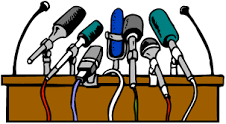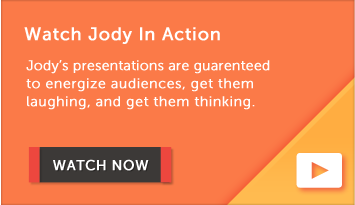
Few leaders are exceptionally good at rallying the troops. They want results, but their words don't inspire action.
A team motivational speech will temporarily inspire teams. Yet, As stress continues to pile up back at work, the motivation will eventually fade. However, if a speech motivates action, it builds momentum that builds on itself.
What makes any speech motivating is positive energy and enthusiasm. The speaker is lending their buoyant, positive attitude to lift the group.
Enthusiasm is contagious.
WE ALL CRAVE MOTIVATION
People don't just work for a paycheck; they want to feel purpose and meaning. The need for motivation is about balance. Throughout the day, teams feel bombarded by problems (customer complaints, cutbacks, limited resources); this weighs them down. Over time, negativity can surround our problems and be a drag on morale. Left unmonitored, this workplace can turn toxic.
Uplifting, motivational moments serve to buffer negativity. However, motivation needs to be regular and consistent to have a lasting impact. Workplaces that suffer from low morale don't have enough positive messages to keep people engaged and happy.
Leaders who deliver regular team motivational speeches ( one on one and as a group) will keep spirits high. Focus the message on group accomplishment, the overall significance and meaning of the work, and moments to be proud. Overall, bringing up a spirit of enthusiasm.
A leader's most significant role is to inspire hope in others. There is no better way to do this than by motivating the troops with an inspirational speech. Below are some ideas on how to accomplish this heightened sense of hope and inspiration.
Remember, every motivational speech should take the audience from where they are now, to a new, better reality.
Start writing a motivational speech by taking your audience's current situation and comparing it to a better future. Best selling author and keynote speaker coach, Nancy Duarte suggests, a great speaker will make the gap between the two realities as dramatic as possible.
Throughout the talk, take people from the present to the future, and from the problem to the solution. The motivational speech should continue to be an ebb and flow from what is and what could be.
If you are trying to convince people that a new policy is good, clearly outline how we work now (and all the inefficiencies) and how down the road ( once all the kinks are worked out), this will improve our work situation. Also, appreciate people for the work and effort they put in.
Finally, every speech should end with a call to action that cements in the new, better reality.
THREE TYPES OF PERSUASION TO USE IN YOUR TEAM MOTIVATIONAL SPEECH
Reporting facts and information is only one part of creating a compelling motivational speech. A successful keynote speaker has to strike a balance between analytical and emotional content.
Aristotle argued that to persuade, we must employ three types of argument: ethical appeal( ethos), emotional appeal(pathos), and logos(logical appeal).
Consider each element below as you craft a team motivational speech to persuade:
Ethical persuasion
By sharing your values, experience, and goals, you build credibility with an audience.
The audience will feel connected to you when they appreciate you share similar values.
Logical persuasion
Develop a compelling message supported by a structure that logically supports your premise. State a claim and provide evidence to support it.
Emotional appeal
Appeal to people's feelings by weaving stories and experiences evoking pain or pleasure. Emotional connection with the audience is critical to persuade. Funny keynote speakers use humor to engage emotion, while inspirational speakers use motivational stories to engage passion.
I've seen a lot of guest speakers focus entirely on facts at the expense of emotion and ethical persuasion.
Team Motivational Speech Activities
Take a meeting from good to great or from average to amazing, with interactive activities to reinforce ideas and solidify engagement.
I was a funny keynote speaker for a healthcare organization recently where the program planner organized some fun, lively games to engage the crowd. Audience participation and interaction kept people engaged and involved in the meeting.
Here are a couple of activities the guest speaker facilitated:
The Telephone.
In this team motivational speech activity, start a message at the beginning of a row and have it be verbally communicated progressively down the row to the last person. Once it hits the final person in the row, have them compare the final information with the original message. Peels of laughter result as people find the message is drastically different as it passes down the line.
Tie the lesson to how messages get distorted, misinterpreted, and altered as they move through different people.
To further amplify the activity, tie the messages to content reinforced in the meeting.
Innovation builders.
Organize teams around Tables of 6 to 8 people. Each table gets a bag of marshmallows and a bag of straight pretzels. Instruct teams to build something innovative, preferably related to the meeting theme. Give the groups 5 minutes to make something when time is up, vote on the most innovative design.
A variation to the motivational speech activity is to instruct groups to build the highest freestanding structure.


